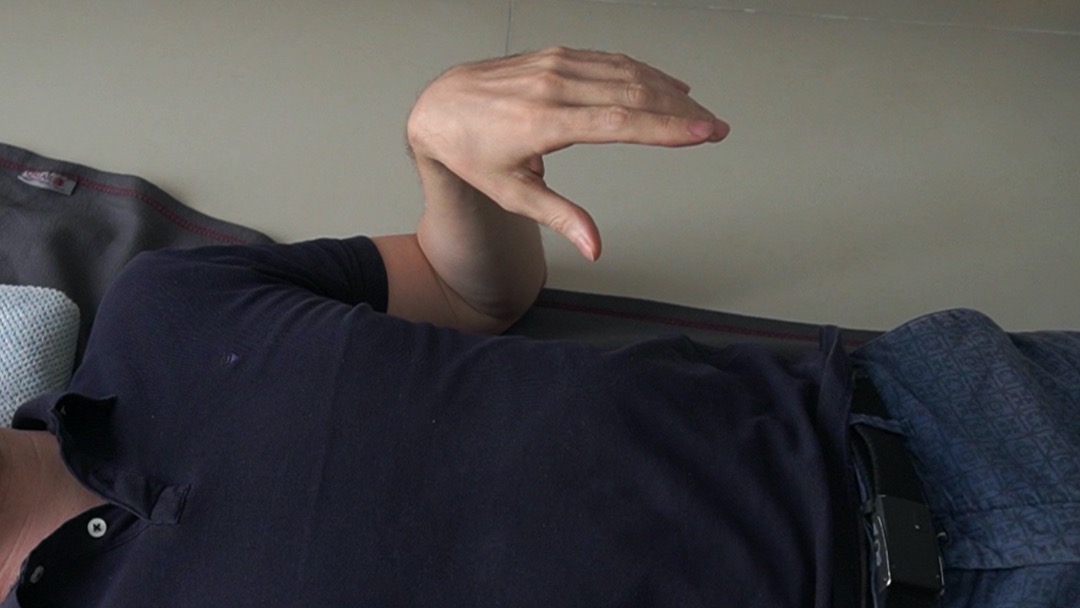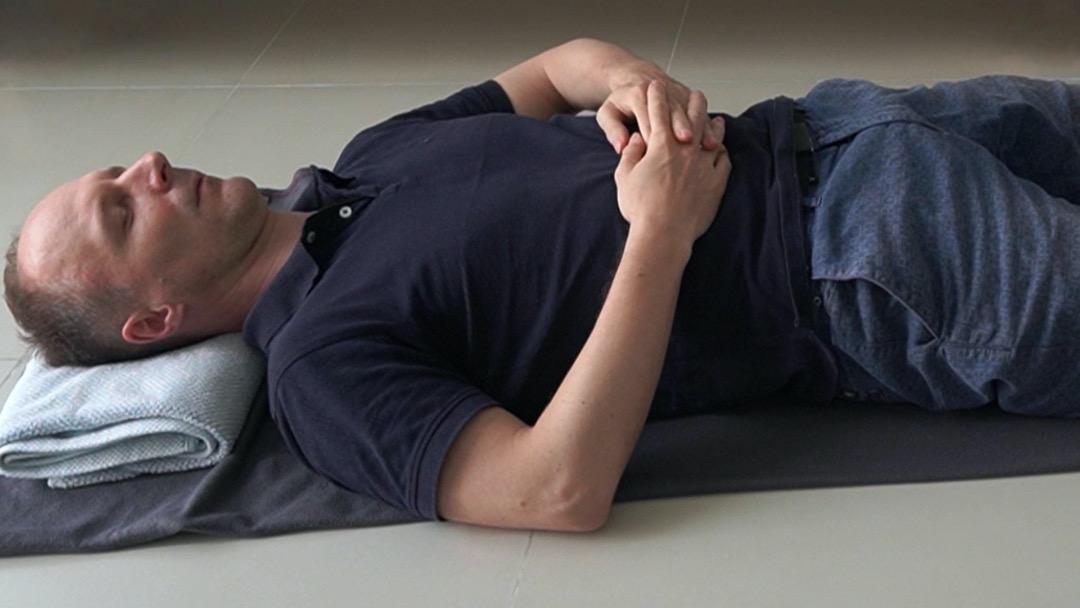Relaxing the eyes by relaxing the hands
In the first „chapter” of this lesson you focus on hand movements. Opening and closing the hands, and then rolling them softly in sync with your breath. This is done in several variations and in various locations on your torso. This is repeated in a second and third chapter, in which more movements are introduced – such as lifting of the elbows or rolling the pelvis – to challenge the process of softening up your hands and breathing freely. In between chapters the softened up hands are placed to fully cover the eyes.
Visually intense tasks such as extended computer or smartphone use, long hours at work, or inadequate lighting may cause eye strain. Short term symptoms can be perceived pain in or around the eyes, blurring, headaches, or even doubling of vision. Eye strain usually is relieved once the eyes are well rested. Here's a great way to help with that. The hands are becoming increasingly softer and more relaxed, and that feeling is then transferred to the eyes. This lesson is like a DIY luxury spa visit for your eyeballs.
eyessupine eyes_hands_1
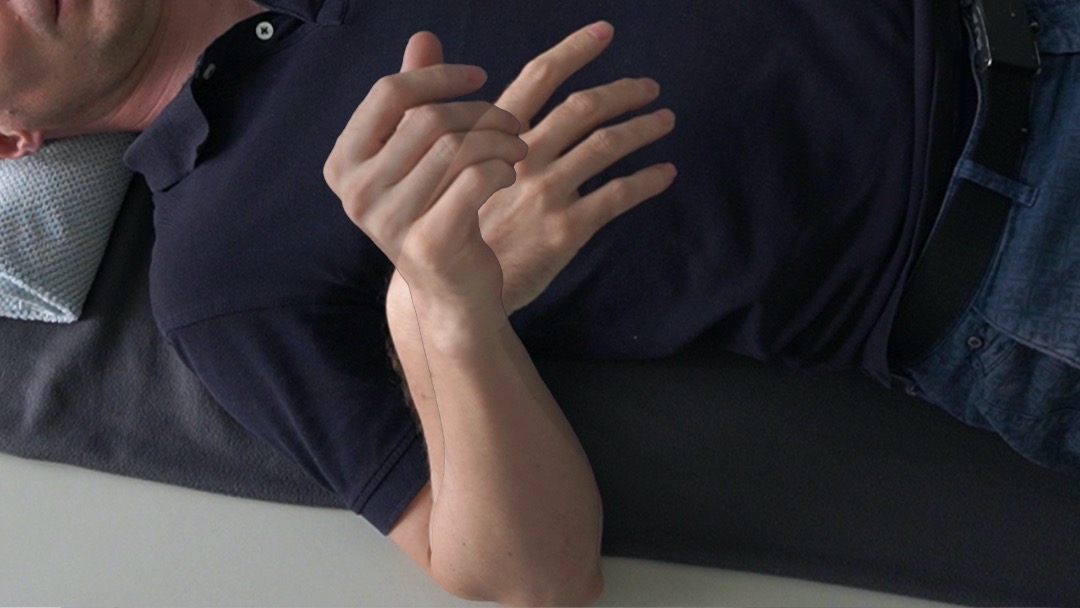
In sitting or lying supine, stand your elbow so that your lower arm is vertical. Chose one hand to work with first. Have your eyes closed.
Stand your hand and let it sink
Once the palm of your hand is in line with the lower arm, once facing the ground.
- When your hand is balanced on your forearm, your fingers tend to be closer together. When your hand is tipped over, your fingers tend to separate from each other.
Make it a slow movement. Be gentle. Explore how slow you can get.
Stand your hand and let it sink
Once the palm of your hand is in line with the lower arm, once facing the ground.
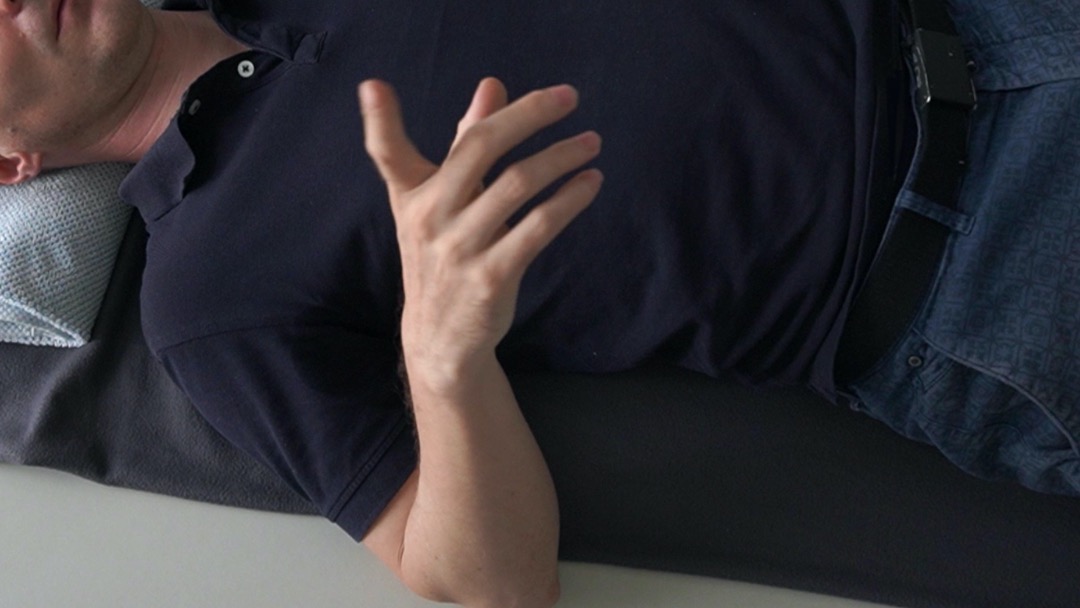
In sitting or lying supine, have one lower arm vertical.
Continuation
Lead with one finger at a time
With each finger one by one lead your hand to stand, then let your hand sink over again.
- Your hand is being guided in a different pathway with each finger. The leading finger is leading just by a tiny little bit, almost invisibly so, do not exaggerate.
Each time you stand your hand it is an opportunity to become aware of unnecessary tension and let go of it.
Continuation
Lead with one finger at a time
With each finger one by one lead your hand to stand, then let your hand sink over again.
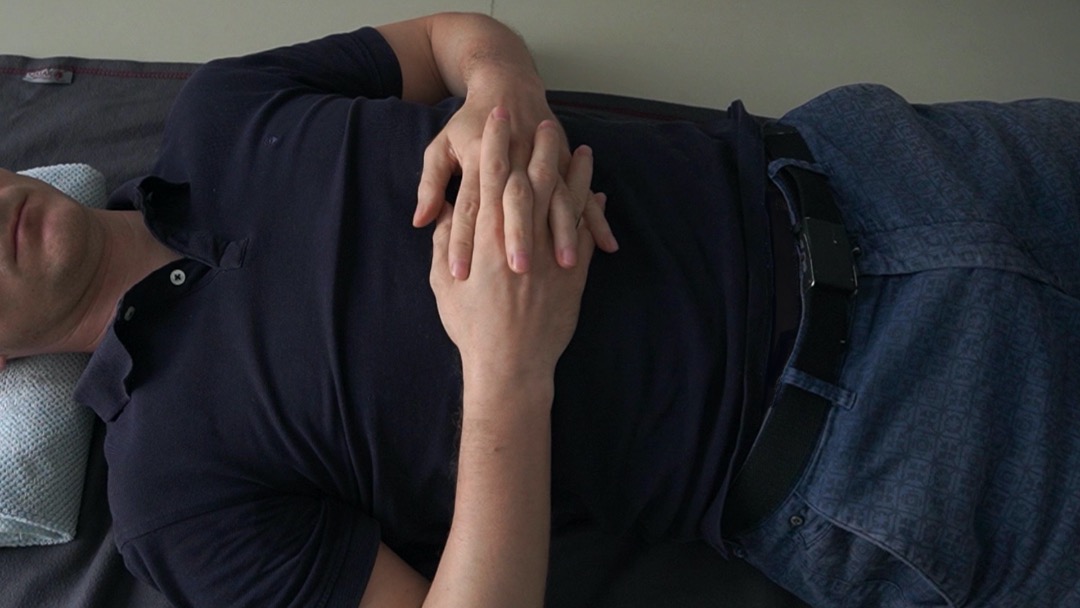
Fingers somewhat interlaced on the belly, elbows resting on the floor, find most neutral position (where you feel the least tension).
Roll interlaced hands with your breath
Roll your hands downwards while breathing in, upwards while breathing out.
- Make the movement as small as the movement of your breath that you feel on your belly. It's as if your hands roll off your belly.
Do as much as you need to feel the movement. And then make it smaller, until movement is almost not visible anymore.
Try to relax your hands and fingers more and more, with every breath.
Roll interlaced hands with your breath
Roll your hands downwards while breathing in, upwards while breathing out.
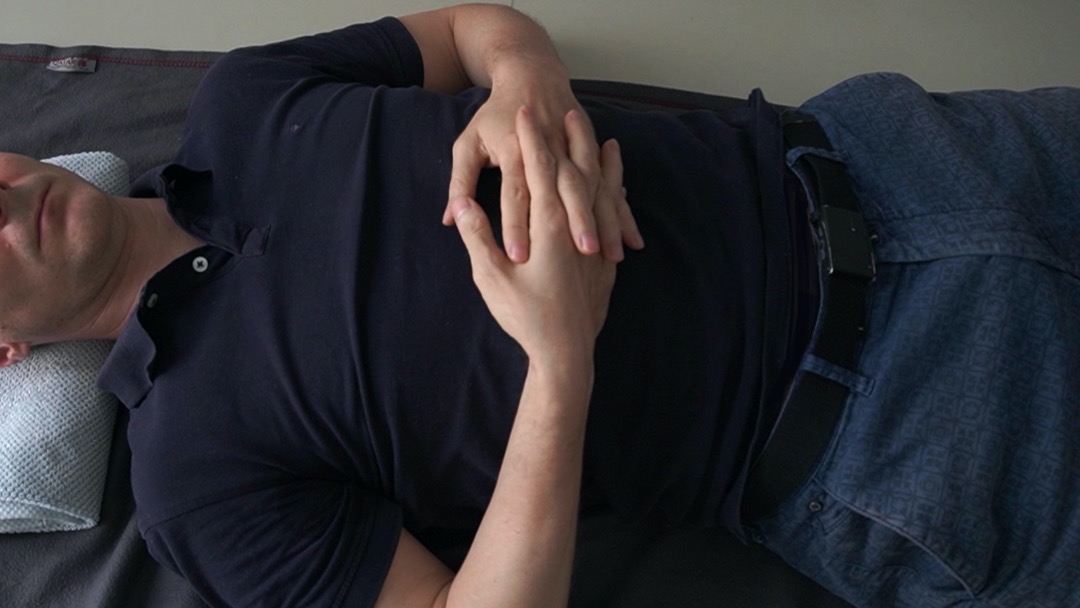
Fingers somewhat interlaced on the belly, elbows resting on the floor.
Roll only right hand
Let your fingers twist and bend and slide, let them become softer and softer.
- You only roll your right hand actively, and let your left hand, and also the fingers of your left hand, be dragged along.
Roll only right hand
Let your fingers twist and bend and slide, let them become softer and softer.
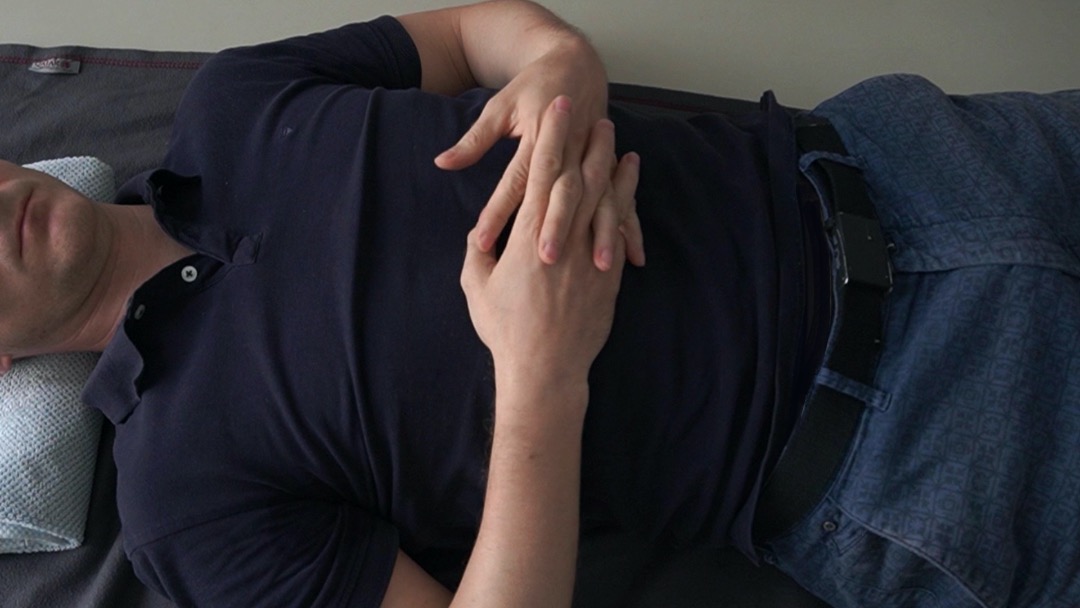
Fingers somewhat interlaced on the belly, elbows resting on the floor.
Roll only left hand
Switch the active hand, gently roll your left hand, let the fingers of your right hand be moved.
Roll only left hand
Switch the active hand, gently roll your left hand, let the fingers of your right hand be moved.
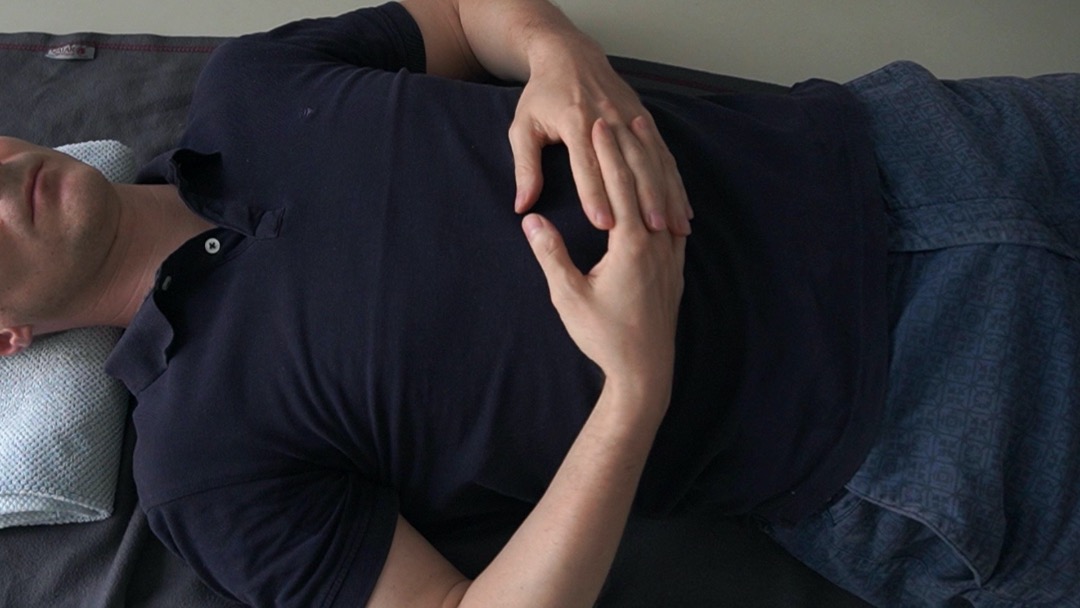
Fingers somewhat interlaced on the belly, elbows resting on the floor.
Roll hands in opposite direction
Continue to move in sync with your breath, let your hands become softer and gentler.
- Use your hand movements to observe where you still have tension in your hands and wrists, and where they are already nicely soft and warm.
Roll hands in opposite direction
Continue to move in sync with your breath, let your hands become softer and gentler.

Fingers somewhat interlaced on the belly, elbows resting on the floor.
Roll interlaced hands with your breath
See how it is now. Enjoy the soft rolling of all fingers and your breathing.
- Feel your hands moving softly, starting from your elbows, over your lower arms, your wrists, palms, and all surfaces and every joint of every finger. Different depths of interlacing help you soften up different areas.
Notice the gentle rhythm of your breath.
Roll interlaced hands with your breath
See how it is now. Enjoy the soft rolling of all fingers and your breathing.
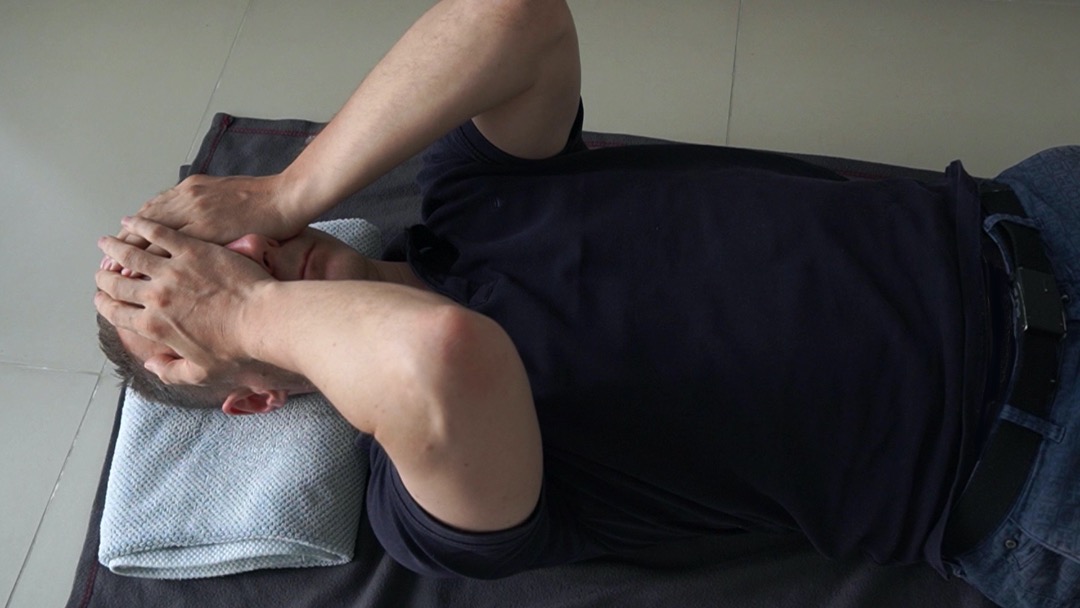
Left palm over left eye, right palm over right eye, arms as relaxed as possible.
Cover your eyes (1)
Cover your closed eyes with the palms of your hands, without putting any pressure on your eyeballs.
- Think of your palms like a sleeve, or a second pair of eyelids, completely sealing off your eyes from incoming light. Your fingers should be on your forehead, well above your eyebrows.
You should still be able to open your eyes underneath your hands.
Cover your eyes (1)
Cover your closed eyes with the palms of your hands, without putting any pressure on your eyeballs.

Fingers somewhat interlaced on the belly, elbows resting on the floor.
Roll interlaced hands with your breath
Freestyle the variations left only/right only/together/contra-rotating.
- Return to these now familiar movements. See if you can improve them even further.
Roll interlaced hands with your breath
Freestyle the variations left only/right only/together/contra-rotating.
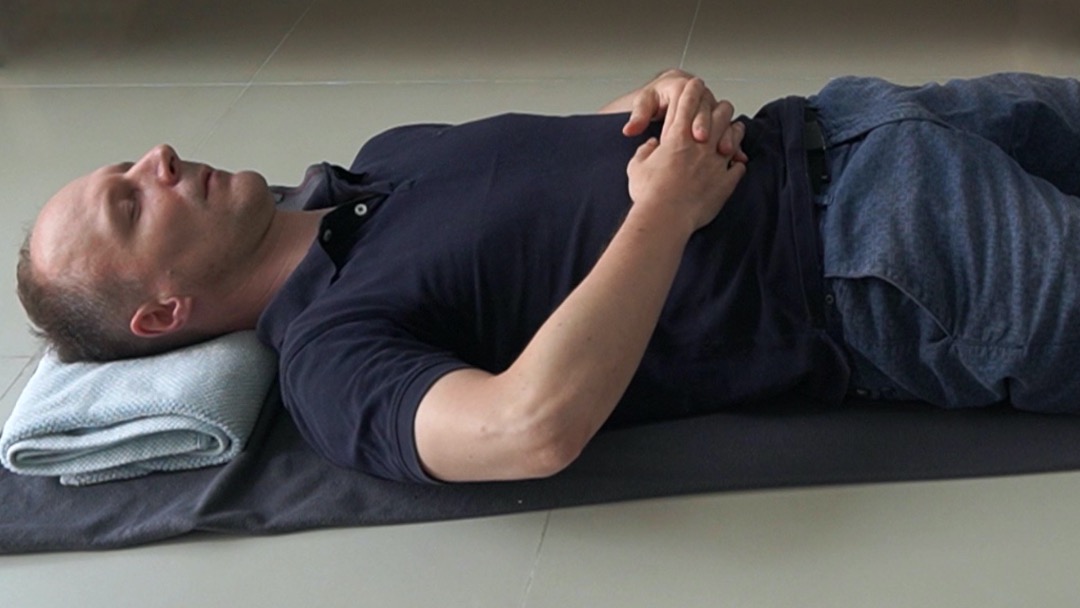
Fingers somewhat interlaced on the belly, elbows resting on the floor. Left elbow hanging down relaxed.
Lift right elbow while rolling hands
Continue the rolling movement. Let the lifting not be a disturbance.
- See that you continue to breath regularly. Do not clench your jaw. Keep your hands relaxed.
Lift right elbow while rolling hands
Continue the rolling movement. Let the lifting not be a disturbance.
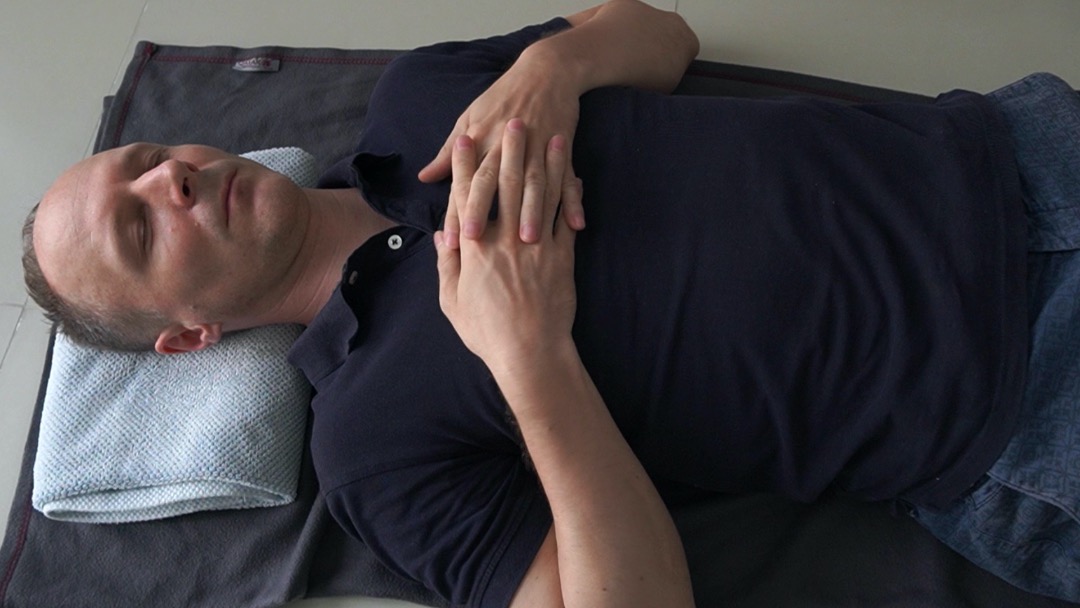
Fingers interlaced, both elbows off the floor.
Roll hands in various locations
On your chest, left shoulder, right shoulder, over your mouth, forehead.
- Move your hands about and keep them relaxed, keep the hands rolling.
Let the different locations not interfere with your relaxation and smoothness.
Roll hands in various locations
On your chest, left shoulder, right shoulder, over your mouth, forehead.
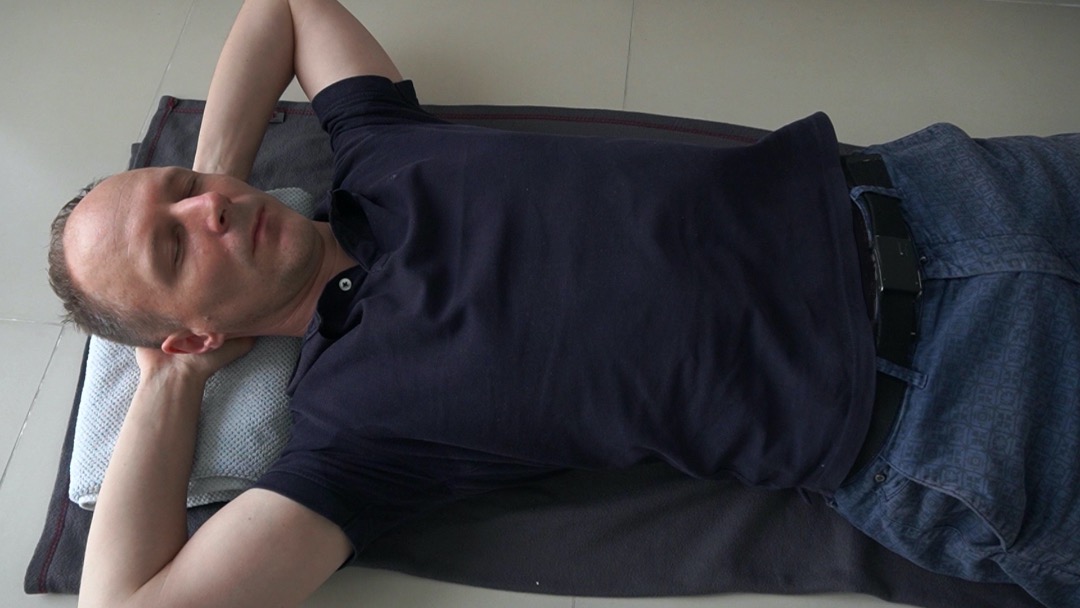
Fingers interlaced, hands behind the head.
Rest head in interlaced hands
Keep your hands interlaced and rest your head in your hands for a moment.
- Feel the weight of your head. Observe your breathing.
Rest head in interlaced hands
Keep your hands interlaced and rest your head in your hands for a moment.

Fingers interlaced, hands behind the head.
Roll hands behind head
With the weight of your head on your hands roll your hands again.
- Experiment with the various rolling combinations. Let the weight of your head help your fingers and hands relax even further.
Roll hands behind head
With the weight of your head on your hands roll your hands again.

Left palm over left eye, right palm over right eye, arms as relaxed as possible.
Cover your eyes (2)
Cover your eyes again. Observe how it is now.
- Take your time to observe what you see in the dark. You can have your eyelids open or closed. Observe how patterns emerge, change, cease, come from anew, enjoy the show.
Feel how your eyes relax more and more.
Cover your eyes (2)
Cover your eyes again. Observe how it is now.
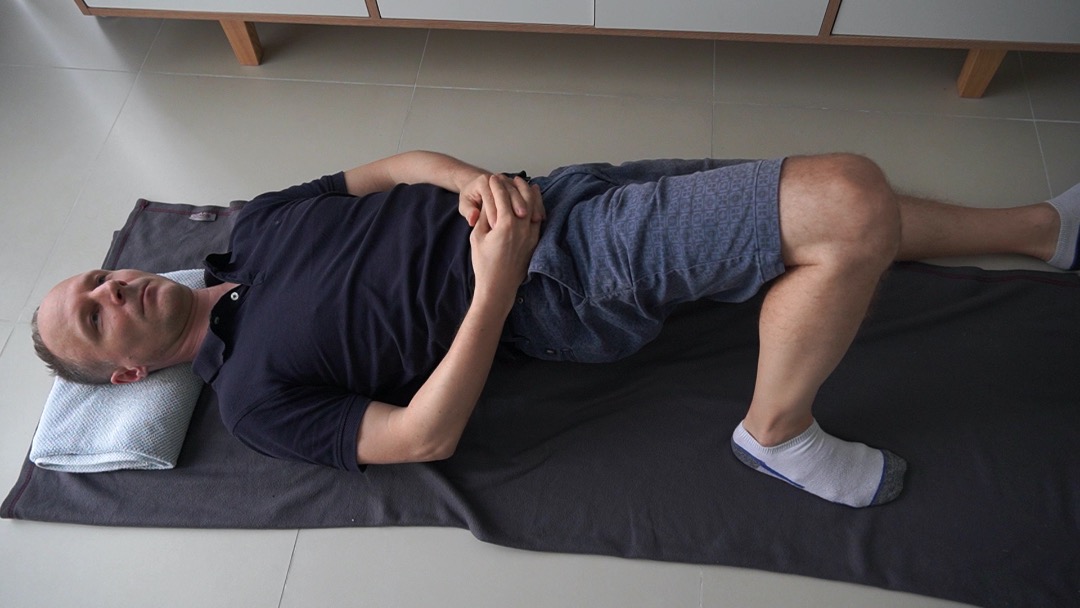
Supine, right leg bent with right foot standing, left leg extended.
Roll pelvis to the left
Press with your right foot against the floor, thus rolling your pelvis to the left.
- Do not lift your pelvis. Allow your left knee to bend to the left side.
Breath freely, allow your head to roll as well.
Roll pelvis to the left
Press with your right foot against the floor, thus rolling your pelvis to the left.

Supine, right leg bent with right foot standing, left leg extended, hands interlaced on your right hip joint.
Continuation
Roll pelvis, roll hands
Continue to roll your pelvis like before, and also roll your hands as before.
- Don't let the pushing with your right foot, and the rolling of your pelvis, disturb the soft and gentle rolling of your hands.
Use less and less effort. Be slow. Move gently. Enjoy your movements.
Continuation
Roll pelvis, roll hands
Continue to roll your pelvis like before, and also roll your hands as before.
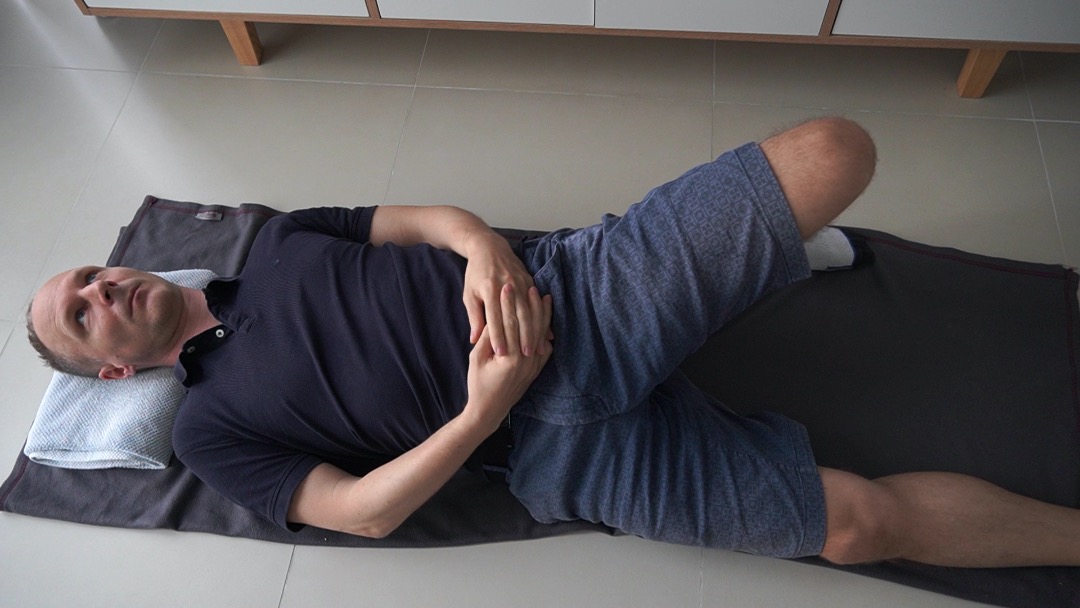
Supine, left leg bent with left foot standing, right leg extended.
Roll pelvis to the right
Switch sides. Roll your pelvis, then add the rolling of your hands.
- Play with the variations you did so far.
Allow your interlaced hands to come over your left hip joint, while you roll your pelvis to the right.
Roll pelvis to the right
Switch sides. Roll your pelvis, then add the rolling of your hands.

Left palm over left eye, right palm over right eye, arms as relaxed as possible.
Cover your eyes (3)
Take a rest. Then cover your eyes again. Observe how it is now.
- Take your time. Observe. Allow yourself to relax more and at the same time be fully present in the moment.
Cover your eyes (3)
Take a rest. Then cover your eyes again. Observe how it is now.
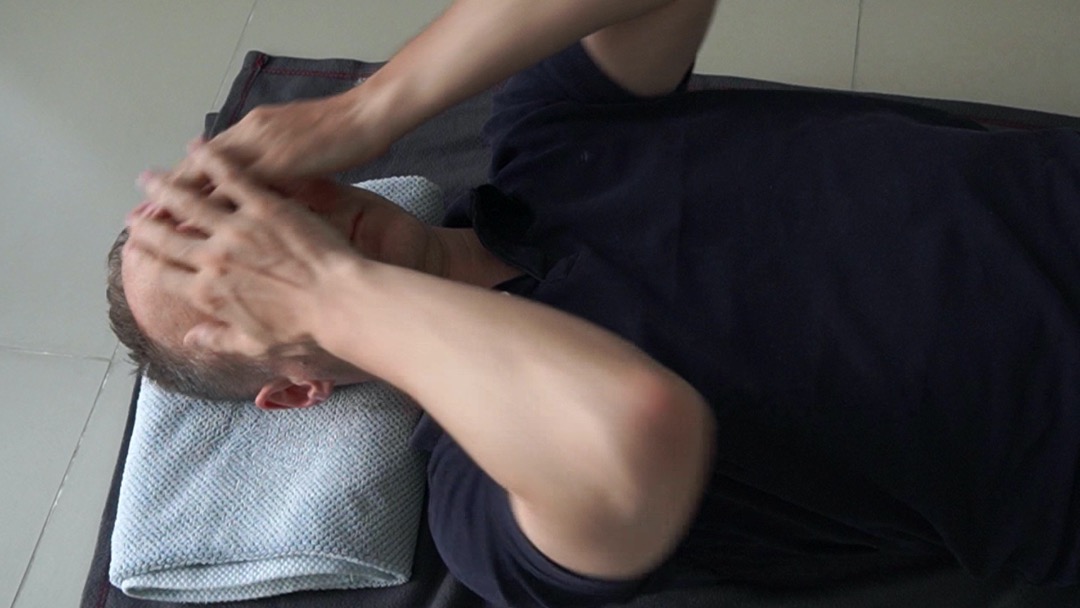
Supine or sitting, as throughout the lesson.
Slowly open your eyes
First only gaze softly. Don't focus. Then alternate between focus, strain, relaxation, softness.
- Don't jump right into your usual way of using your eyes to see. Allow yourself to glide into and out of it.
Alternate between soft gaze and focused vision until you're ready to let go of this lesson. Then get up (or take a longer rest).
Slowly open your eyes
First only gaze softly. Don't focus. Then alternate between focus, strain, relaxation, softness.

